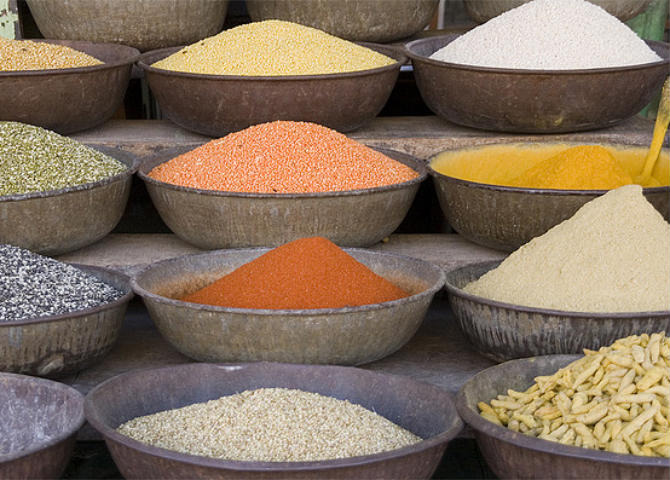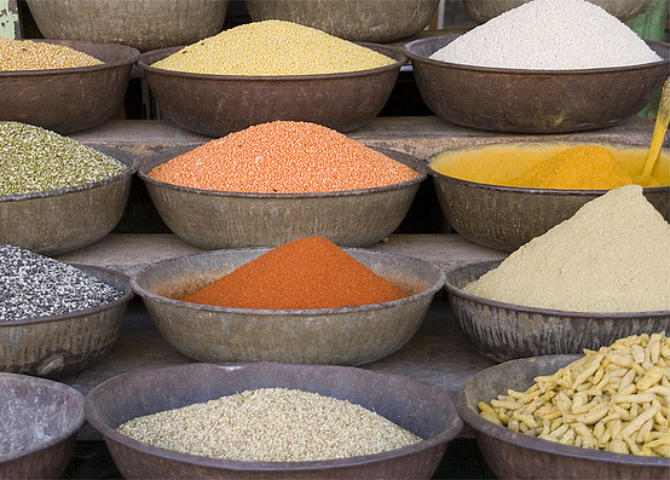How To Eat Like A Real "Gypsy"
We may receive a commission on purchases made from links.
Gypsy cuisine has been called "the little known soul food" and is one of my favorite ways to celebrate my mixed-Gypsy heritage and Romani and Traveller history month. Gypsies have a rich and complicated identity and history, which is reflected in the delicious complexity of the food, and, like most things, it's a lot better when you understand it. First, the word "Gypsy" is the term that gadjé (Rromanes for non-Romani people) have used to refer to Roma, the ethnic group originating in India around the eleventh century. Overtime, Gypsy has also been used as a racial slur, especially in the lowercase "gypsy," and antigypsyist language is normalized in so many languages that it's become idiomatic (e.g., "That shopkeeper gypped me!"). Between this and trendy Gypsy appropriation, some Roma reject the word altogether, while others, like Filip Borev prefer it as long as it's used correctly and respectfully, and some, like myself, choose to reclaim Gypsy as an act of linguistic and identity empowerment. In short, if you aren't Romani, it's safer and use Roma and Romani instead of Gypsy (and definitely don't say "gyp"), or ask just the Romani person you're speaking with what s/he prefers. If you are Romani, you're free to reclaim or shun the word Gypsy as you see fit. Travellers, also known as "Tinkers," are not ethnically related to Roma. They are of Irish origin and have their own culture and language, but they are also traditionally nomadic and historically and presently suffer the same stigma and oppression that Roma suffer. Common racial slurs used against Travellers are "Gypsy," "Pikey," and "Knacker," so those are more words to avoid.
While Roma have maintained a distinct and unique culture with many cultural differences among the different clans (such as the Sinti, Lovara, Manouche, etc.), much of Romani culture, including cuisine, has been shaped by oppression and the regions that Roma live in and travel through. In his book, We are the Romani people, linguistics and Romani studies professor Dr. Ian Hancock explains that, "like Roma music, there is no single type of Romani cookery, but a range of cuisines that differ from place to place, depending upon locally available ingredients and the social circumstances of the community." The vast regional differences are a product of nomadism, a practice born out of persecution (not whimsy), which began when the Roma first left India and were met by hostile and xenophobic Europeans. My Sinti Romani grandmother grew up in Germany, so her cooking has a heavy German influence. Before her family settled, they regularly traveled on the Danube from Germany to Hungary and back again, and their cooking reflected their travels. "Social circumstances" refers to the centuries of brutal antigypsyism, including hate crimes, forced sterilization, slavery, racial profiling, apartheid, ghettoization, etc., that still persist today. Despite the current Romani human rights crisis, some Roma have assimilated into gadjé society and the workforce (usually by having the opportunity to keep their ethnicity a secret) and so have more freedom, including culinary freedom. However, there are many Romani populations all over the world who are denied basic human rights.
As you can imagine, if you are not allowed in shops and are pushed into ghettos with no running water, electricity, or sanitation, then your life, not to mention your culinary creativity, would be severely curtailed. My grandmother was born into WWII and Roma were among the groups targeted by the Nazis. During her childhood, she ate whatever she could find with little concern for culture while avoiding the concentration camps in which half of Europe's Romani population was murdered. Although an estimated two million Roma (probably more) lost their lives in the Holocaust, what we call O Porrajmos, the Romani genocide is still barely acknowledged and no reparations have been made.
Despite the many clans and subcultures, all with their own customs and dialects of Rromanes, Romani food culture as a whole shares a love of pepper, a love of bread, and strict rituals for cleanliness and table etiquette. In We are the Romani people, Ian Hancock explains these rituals and observances in more detail, and most of them revolve around the Romani belief that the world is divided into that which is pure and impure. All Roma avoid eating animals that are "impure," such as animals that clean their backsides with their tongues (so, no eating Fifi or Spot!). Roma also shun eating horsemeat because horses are so highly valued and respected. And, in the Indian tradition, Roma further divide food into two categories: "ordinary" and "auspicious" or "lucky" (baxtalo). Auspicious foods are believed to be particularly healthy for the body and soul, and these beliefs are likely rooted in Ayurveda, the traditional Hindu system of medicine that uses food, herbs, and yogic breathing to balance the body. Hancock's list of Baxtale xajmata or "auspicious foods" includes food that is "pungent or strongly flavored like garlic, lemon, pickles, peppers, sour cream, and so on." Most of all, Romani food culture is all about finding thrifty, resourceful, and delicious ways to nourish and purify the body.
This is in part why Romani cuisine has been called "the little-known soul food," and it's slowly becoming more popular with Romani restaurants cropping up, like Romani Kafenava in Slovenia, recently featured on NPR. Although Romani Kafenava was at first protested by residents who didn't want a Gypsy restaurant in town, the business is doing well. This is why it's so important for Roma to share the culture. The hope is that the more that people learn about and fall in love with Romani culture, the easier it will be for outsiders to let go of prejudice, "Gypsy" stereotypes, and false beliefs. Besides, the best way to country's heart is through its stomach. And while "Gypsy" stereotypes have been perpetuated by stories, films, media (mis)representations, and rabid politicians, historically, the Roma have been secretive (for good reason) about Romanipen (the Romani way). That penchant for secrecy made looking up Romani recipes a challenging and amusing task: 90 percent of the recipes I found have no measurements or real instructions because they are "family recipes." (i.e., IT'S A SECRET. STOP ASKING QUESTIONS.) "There's flour, water, oil, and salt if you want. Cook it till it's done. End of recipe." (Probably most Roma grandmothers don't need measurements because they cook by their hearts, but still.) Measurements or no, the more that Roma are speaking out, writing about their experiences, demanding human rights, running for political office, recording Romani & Traveller history, the more we preserve and understand a threatened culture and language. Romani and Traveller culture is nothing like a big fat wedding, a reality TV show, a fairy tale, or a Fascist's nightmare. It's not even reducible to poverty and oppression. Roma are rising above oppression, educating the public about the culture and the human rights crisis, and contributing to society as doctors, artists, writers, lawyers, activists, chefs, and more, and allies to the Romani community are doing their part, too. Opre Roma! (Roma, rise up!) This is the spirit in which I share these recipes with you. I warmly invite you to celebrate Roma and Traveller History month by playing some Django Reinhardt and Esma Redzepova, cooking up these dishes, and enjoying them with friends and family. Te xas sastimasa! May you eat in health!
Click Here for the "Gypsy" Celebration Soup Recipe
Click Here for the Rosemary, Dill, and Bacon Manriklo Recipe
Click Here for the Cinnamon Saffron Galuški Recipe

